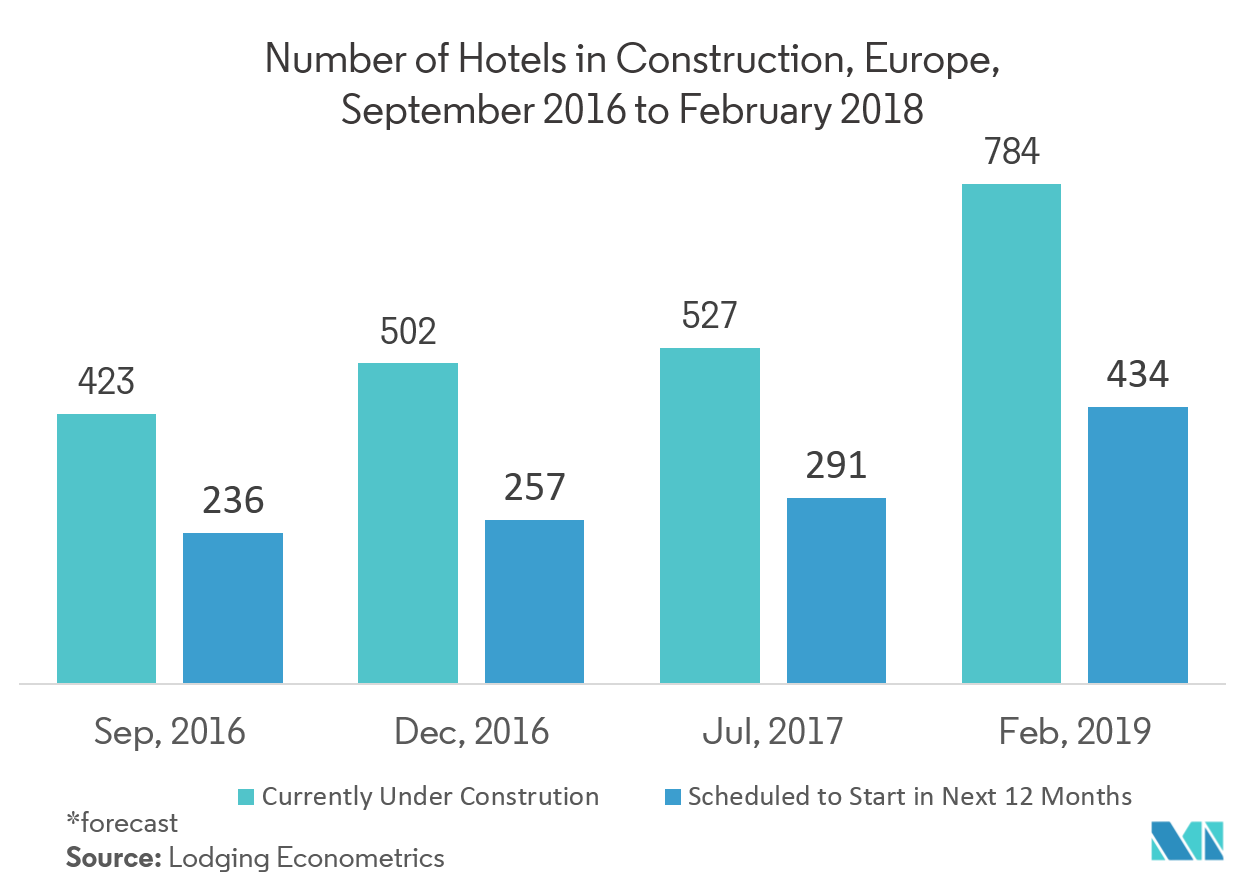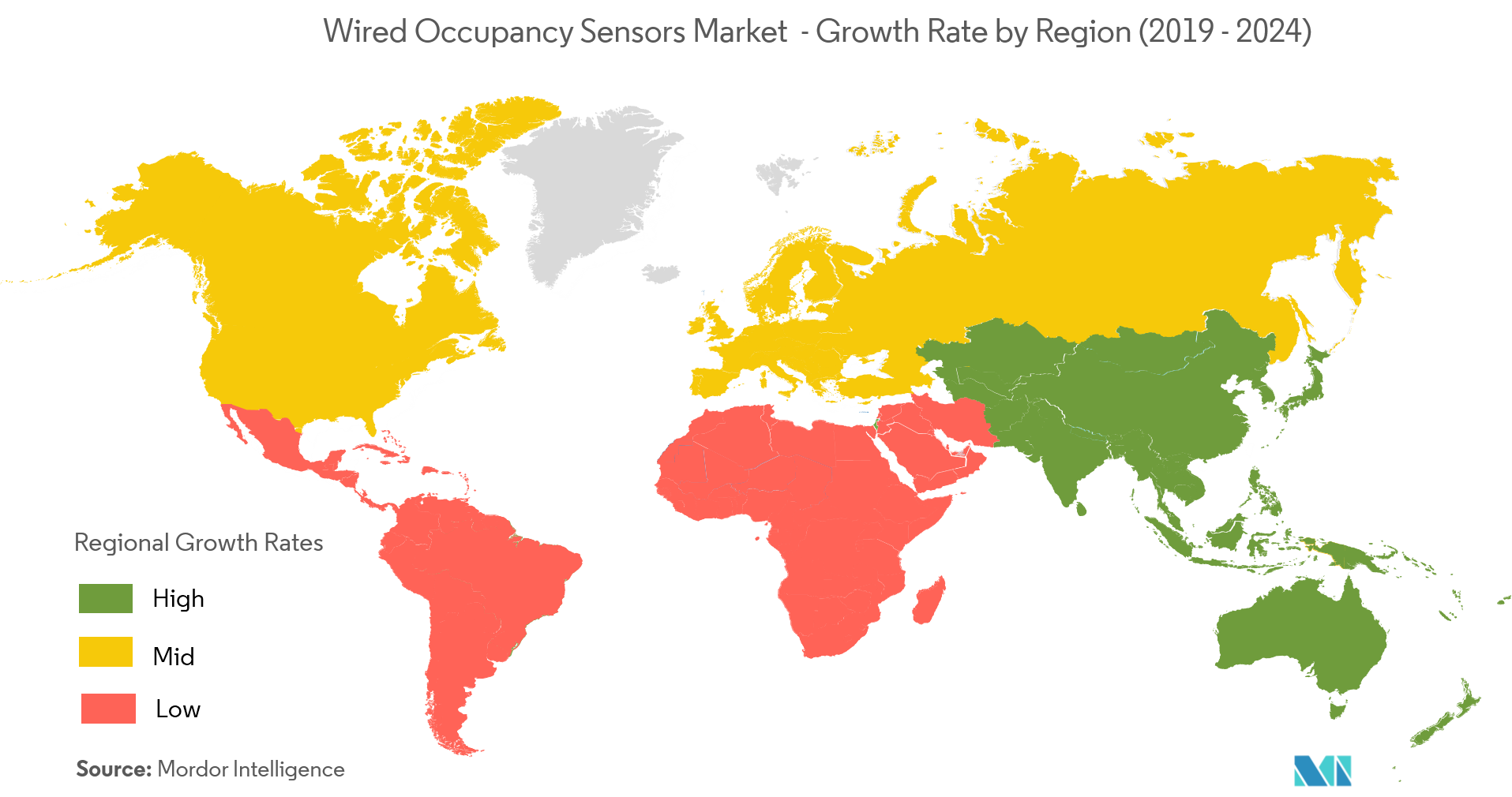Market Trends of Wired Occupancy Sensors Industry
This section covers the major market trends shaping the Wired Occupancy Sensors Market according to our research experts:
Applications in Hotel and Hospitality to Hold a Significant Share
- With the increase in travelling population, the demand for accommodating hotels has increased, and with increasing hotel construction, the segment will further drive the market growth.
- Moreover, a smart city initiative, which includes smart buildings can create an efficient and intelligent services delivery platform for public and municipal workers by installing sensors all over the cites, (eg, in buildings, colleges, hotels, households, etc.,) and to create platforms that allow the share of information and give it for proper use to the public, city managers, businesses, and professionals. This platform also provides significant potential for market growth.
- Besides, energy consumption and wastage at hotels are one of the significant concerns, representing 3% to 6% of hotel operating costs and accounting for approximately 60% of its CO2 emissions, according to Energy Solutions. The primary cause of energy consumption could be technical, architectural, etc. The installation of the occupancy sensor resolves the energy wastage concern.
- Visitors forget to turn off the lights in rooms when not in use, therefore, to address this issue, they have installed occupancy sensors in every room, washrooms, etc. So when a person enters a room, the light will turn on automatically, and it will turn off simultaneously, as the person moves out of the room, which can help development in growing the occupancy sensor market, due to its computing model.

North America to Account for a Major Share
- North America is mainly driven by a higher focus on innovations and advancements in occupancy sensors such as image processing occupancy sensor (IPOS), intelligent occupancy sensor (IOS), and microphonics which has boosted the demand of occupancy sensor in the region.
- Latest advancements in occupancy sensors such as image processing occupancy sensor (IPOS), intelligent occupancy sensor (IOS), and microphonics in the manufacturing of occupancy sensors have led to an increase in the market share of these sensors in a variety of fields.
- The key applications of occupancy sensors are in residential, commercial, educational, healthcare, retail, and hospitality buildings. Occupancy sensors are most widely used in residential and commercial buildings due to the massive growth in the construction sector in various regions across the globe.
- The United States is leading the market due to development in various sectors, such as commercial and residential and increase in the rise of wireless network infrastructure is driving the growth in the home automation, which is helping in the growth of occupancy sensor market. Similarly, the growing demand for HVAC systems in the US region is anticipated to play a crucial role in this market.


